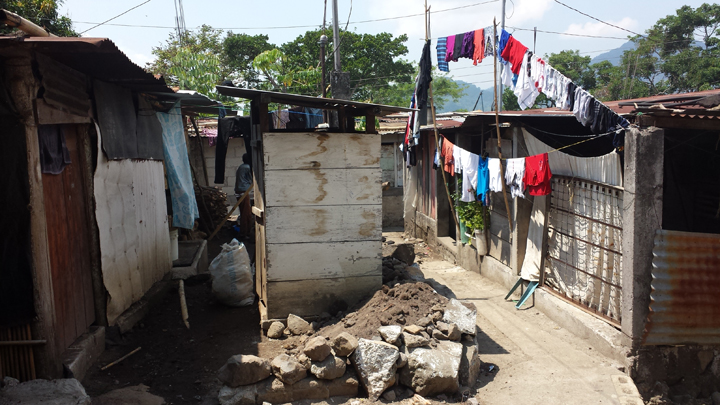A staggering percentage of Guatemalan children are malnourished. They are actually the most malnourished people in the Western Hemisphere. It’s infuriating that in a country with so much fertile land and natural resources that people could be starving. The reason so many are malnourished became blatantly clear after we completed our market activity, but let me provide some context first.
The minimum wage in Guatemala is around 75 Quetzales per day, which is just over $11 US, but people are rarely actually paid that. There is very little work to go around and people’s desperation is exploited, so many only earn closer to 25 Quetzales (around $3 US) per day. Oh, and I almost forgot to mention that a round-trip bus fare to the market is 10 Quetzales. When the average indigenous family is around nine people the ability to feed every mouth becomes their main priority.
We split up into groups of three and were each given 10 Quetzales to purchase enough food to feed a family of nine for a day, and we were given about an hour to do it. It was not easy. What will provide the most energy for the least amount? Carbohydrates. We knew we had to focus on those, but when we were asking merchants how much a pound of each item was we thought they were messing with us (ever haggle at a market with up to 100% markup?). They weren’t. We honestly went up and down the streets and each merchant gave us either the same, or a similar price. We were pretty blown away over the cost of food in Guatemala. It’s not much different than the cost to us here and our minimum wage is closer to $11 US per hour. This is what my group bought to feed a family of nine for a day.
- 1 lb of corn
- 2 oz of limestone (needed to make tortillas and adds calcium)
- ½ lb black beans
- ½ lb rice
- 1 jalapeño
- 3 plantains
- 1 lb tomatoes
Would that be able to feed a family of nine for a day, though? I still wonder, to be honest. We were told that the person that works the hardest in the family is fed the most and that tortillas filled with sugar are eaten for energy to work. What about everyone else? What about children that require nutrients for proper development? The answer to those questions is that they go without.
The activity really hit home and made me think how fortunate I am to never have felt true hunger. The worst part about the hunger in Guatemala is that it’s due to inequality––government, socio-economic, land distribution, and gender to name a few. That’s why organisations like the PSAC Social Justice Fund and Education in Action that support the CCDA are so important; they are working on getting people land to grow food to feed their families and teaching indigenous people about proper nutrition.
With that activity constantly in the back of our minds we worked really hard to build a community centre in San Filipe. The community has gone without a central meeting place to congregate and have their children play for the last 17 years. Other than the foundation we will be completely building the community centre. I have discovered that I have a knack for hammering, and really enjoy that everyone from the group has found their niche and used it to help. San Filipe is a community that doesn’t have much, there is some stark poverty here and we all feel so grateful to be able to help out. The one thing this community is rich with is amazing children and friendly people. Time to get building!
We will be working on this community centre until we get ready to leave Quixayá and head to Antigua for a day then to Guatemala City for a farewell dinner. It’s really bittersweet. We have been made to feel at home here in Guatemala and I will never forget the experiences here.
Next we will be meeting with the CCDA to discuss their political work and getting ready to leave Guatemala. There are so many lessons I have learned while being here and I cannot wait to share them with you.
Hasta luego!
Jen Botincan

Before

Behind the Beautiful Landscapes Live Beautiful People that Need our Help
